Language:
How to Grow Your Shopify Store in 2025: Growth Opportunities Hidden in Plain Sight
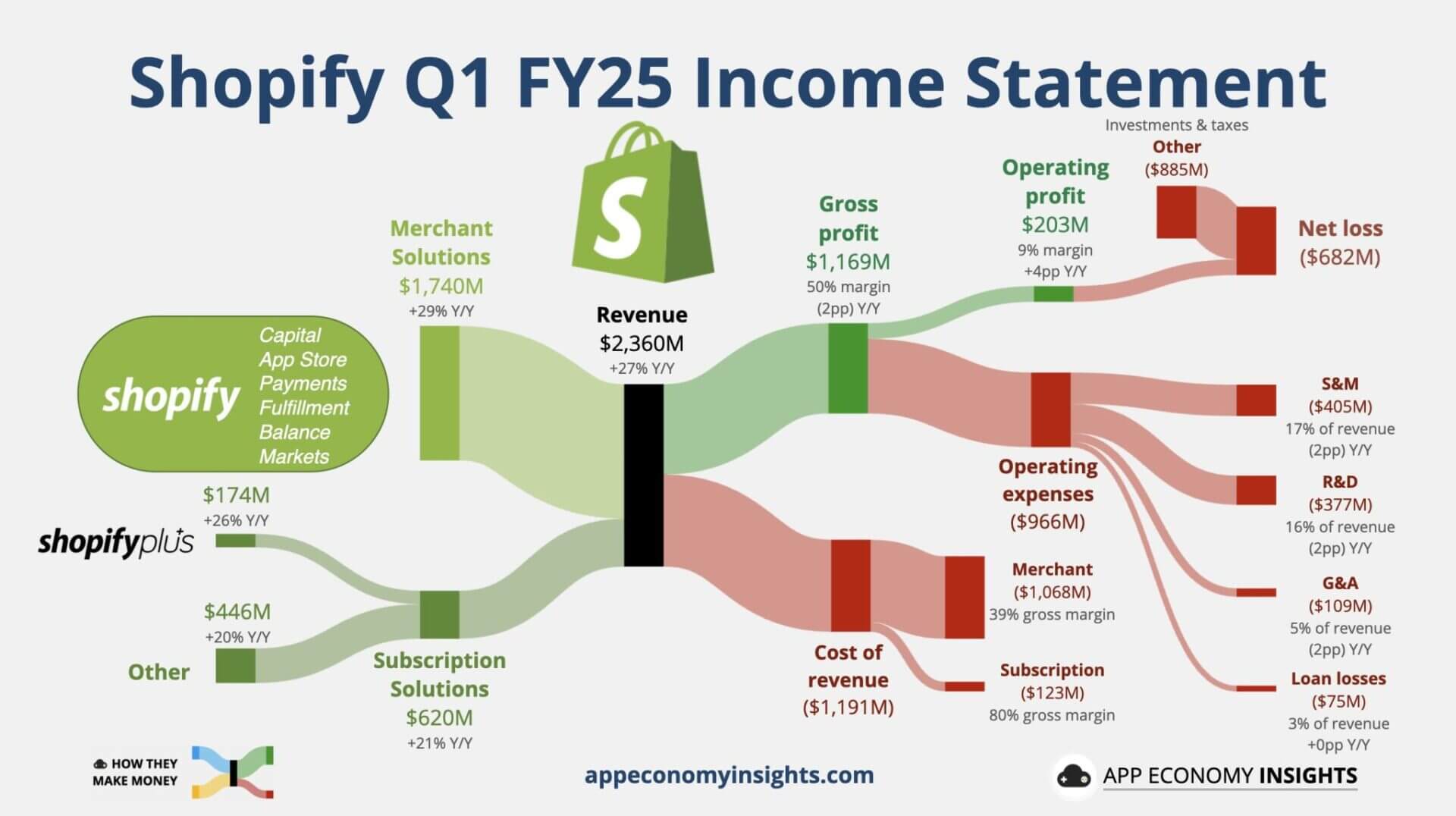
Shopify just dropped its Q1 2025 earnings, and the numbers are solid.
Shopify achieved 27% revenue growth and 15% free cash flow margin.
The e-commerce giant is not only growing, it’s evolving. But here’s the thing: buried in those financial highlights were two growth opportunities that many Shopify merchants haven’t fully explored.
In a post-earnings recap, Shopify’s VP of Product, Feifan Wang, spotlighted two Shopify growth opportunities that are fueling the platform’s momentum: International expansion and B2B commerce. These aren’t side quests, they’re strategic pathways for future-proofing your brand and scaling smarter.
If you’re a DTC brand, e-commerce seller, or retail entrepreneur, this post will break down why these trends matter, how to take advantage of them, and how platforms like doola can help you scale across borders and buyer types, without the backend headaches.
Quick Q1 Recap
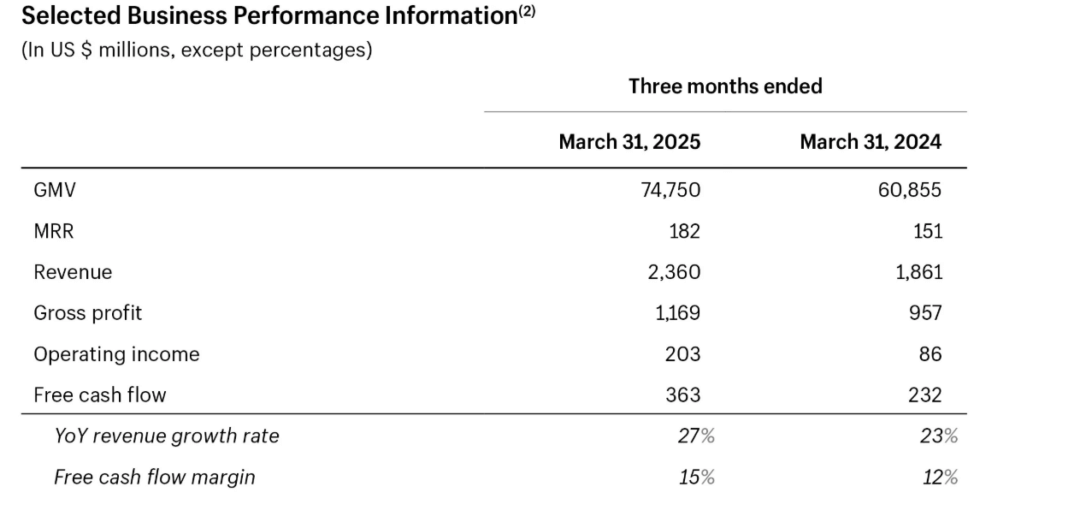
Let’s start with the key highlights from Shopify’s Q1 2025 earnings:
- Revenue surged 23% year-over-year (YoY), beating Wall Street expectations.
- Gross Merchandise Volume (GMV) jumped by 20%, signaling strong merchant and buyer activity.
- Shopify saw growth across key international markets, with Europe, APAC, and LATAM gaining serious traction.
- Investment in Shopify Plus, Shop Pay, and B2B-native features is clearly paying off.
So, what’s powering this surge? According to Shopify’s product leadership, two levers stand out: global reach and B2B readiness.

How to Grow Your Shopify Store in 2025: Growth Opportunities Hidden in Plain Sight
Let’s tap into the the two biggest growth opportunities for your Shopify store in 2025, and how you can start using them effectively today. There’s no time to waste when it comes to e-commerce!
Shopify Growth Opportunity #1: International Expansion
In Q1, cross-border commerce grew by double digits, with international sales now accounting for a bigger slice of the GMV pie. Shopify’s recent updates around localized storefronts, native multi-currency checkout, and international shipping support make it easier than ever for merchants to go global.
Shopify isn’t just a North American success story anymore. It’s going global, and fast.
But here’s the thing: many US-based merchants still aren’t tapping into international markets. Why? Because of backend complexities like compliance, banking, and tax laws in unfamiliar jurisdictions.
Why This Matters: What’s in It for Shopify Merchants
The e-commerce space is no longer defined by borders: it’s global, growing, and wide open for brands ready to scale smart.
By 2025, the global e-commerce market is expected to hit a staggering $6.3 trillion, driven largely by demand from consumers outside the US.
And here’s what’s exciting: international shoppers are increasingly drawn to niche, premium, and purpose-driven DTC brands, the ones that thrive on Shopify.
Shopify has already done a bit of the heavy lifting with cross-border tech tools like multi-currency checkout, localized storefronts, and international fulfillment. But for merchants to truly capitalize on these global tailwinds, there’s a hidden hurdle: backend infrastructure.
From business formation to international banking to tax compliance, scaling globally requires more than just great products, it requires strategic execution.
📈 Global Expansion & Scaling Opportunities for Shopify Sellers
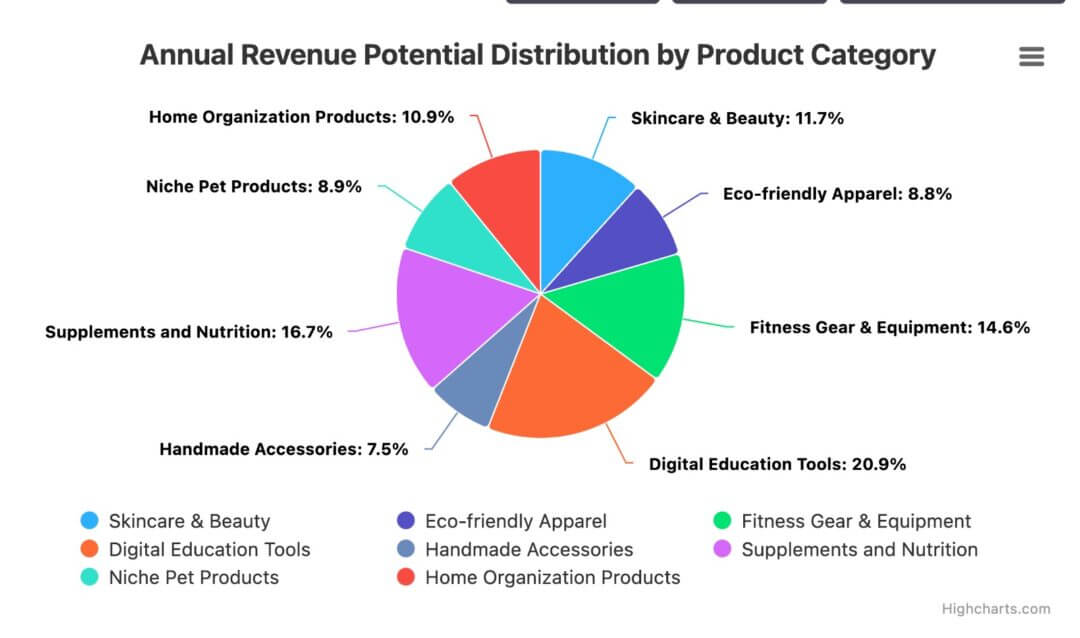
Buried in the financials and market commentary was a clear message: global expansion isn’t just an option for Shopify merchants, it’s the next logical move for those aiming to scale sustainably.
Shopify’s Q1 2025 results didn’t just show strength, they revealed strategy.
Because the world is hungry for innovative, high-quality, niche DTC products, many of which are already being produced by US-based merchants. From skincare brands to eco-friendly fashion lines, Shopify sellers have what the global market wants.
But here’s the thing: successful international growth isn’t just about translating your homepage and shipping overseas. It requires strategic market selection, legal compliance, and a back-end infrastructure that supports cross-border commerce.
To help you identify where the biggest opportunities lie, we’ve mapped out a curated set of global expansion plays for Shopify sellers across categories, complete with revenue potential and expected YoY growth:
| Product Category | Industry Vertical | Top Markets | Annual Revenue Potential (Est.) | Projected Growth (2025 YoY) |
| Skincare & Beauty | Personal Care | South Korea, UAE, UK | $200K–$1.2M | 17% |
| Eco-friendly apparel | Sustainable Fashion | Germany, Sweden, Australia | $150K–$900K | 19% |
| Fitness Gear & Equipment | Health & Wellness | Canada, India, Japan | $250K–$1.5M | 14% |
| Digital Education Tools | EdTech / SaaS | Singapore, UK, UAE | $500K–$2M | 21% |
| Handmade Accessories | Artisanal Goods & Crafts | France, Italy, South Korea | $100K–$800K | 13% |
| Supplements and Nutrition | Health & Wellness | Germany, UK, Brazil | $300K–$1.7M | 16% |
| Niche Pet Products | Petcare & Lifestyle | UK, Canada, Australia | $120K–$950K | 15% |
| Home Organization Products | Home & Living | Netherlands, Germany, Japan | $200K–$1.1M | 12% |
Note: Estimates are based on Shopify merchant performance benchmarks, global market data, and average conversion rates by region (2023–2024 data).
💡 Expert Tips: What Sellers Should Know Before Going Global
Just because a category has strong revenue potential in a particular country doesn’t mean every merchant should charge in headfirst. International success comes from alignment, not assumptions.
Here’s how to approach it smartly:
- Early-stage sellers (making <$250K/year): Consider markets with less regulatory complexity and high e-commerce adoption like Canada, the UK, and Australia. For example, launching niche pet products or handmade accessories in these regions could yield quicker wins with minimal overhead.
- Growth-stage merchants (>$250K/year): Look at more competitive but higher-potential markets such as Germany, Japan, or UAE, especially for verticals like supplements, fitness, and skincare. At this stage, you should have the capital to test localized marketing and optimize fulfillment strategies.
Now global expansion takes time. So determine the roadmap for your business in 6, 12, and 24 months. Understand import/export regulations, tax compliance, and fulfillment SLAs. This is where partnering with backend infrastructure platforms like doola becomes mission-critical.
Because ultimately, success overseas starts by having your legal and financial foundation set up right at home.
And with doola, you can form a US LLC, access global banking, and handle compliance, even if you’re scaling in six different time zones.
Example: Global Expansion Opportunity for Eco-Friendly Apparel

Let’s bring the data to life by spotlighting a real-world opportunity: a Shopify brand, for instance, that sells eco-friendly apparel is now eyeing expansion into Germany and Sweden: two high-GDP countries with strong sustainability-conscious consumer segments.
Now, before diving in, a few things to consider:
Expanding globally isn’t just about market size; it’s about accessibility, cost-efficiency, and whether your brand can actually profitably acquire customers in that market. That’s where market sizing and understanding your Customer Acquisition Cost (CAC) become essential.
If you’re relying on paid media, localized influencer marketing, SEO, and eco-conscious community building, your estimated CAC in EU markets could range from $18–$35, depending on channel mix and competition.
Now let’s size up this opportunity.
Market Sizing Breakdown: Opportunity Forecast & Revenue Potential
To illustrate how Shopify sellers can strategically tap into international demand, let’s now break down the opportunity forecast and revenue potential of this DTC brand (expanding into Germany and Sweden), right from the point of market entry to acquisition and profitability.
| Metric | What It Means | Value / Calculation |
| 1. TAM (Total Addressable Market) | The global market size for eco-conscious fashion across all channels and regions. | $14 billion (global projection based on 2024 market data) |
| 2. SAM (Serviceable Available Market) | The segment of TAM specifically represented by Germany and Sweden, based on combined EU demand (~15%) | $2.1 billion = 15% of $14B |
| 3. SOM (Serviceable Obtainable Market) | The realistic portion of the SAM that Shopify DTC brands can target in their first year (0.2% of SAM) | $4.2 million = $2.1B × 0.002 |
| 4. Target Share of SOM | The revenue potential from capturing 5% of SOM through localized marketing, paid media, and EU logistics | $210,000 = $4.2M × 0.05 |
| 5. Customer Acquisition Cost (CAC) | The cost to acquire each new customer via paid and organic EU channels (influencers, paid ads, SEO) | $18–$35 per customer (depends on audience targeting, platforms, and offer strength) |
| 6. Average Order Value (AOV) | Average customer spend per transaction on eco-friendly apparel | $80–$110 (based on Shopify store benchmarks for sustainable fashion) |
| 7. Potential ROAS (Return on Ad Spend) | Return generated per $1 spent on customer acquisition, if AOV is $90 and CAC is $30 | 3x ROAS = $90 / $30 |
💡 What This Means for You
With even a 5% foothold in just two countries, your brand could generate $210,000 in new revenue in Year One, and that’s assuming conservative conversion and acquisition rates.
Now if you’re seeing profitable CACs at $25 and your AOV (Average Order Value) is $80, you’re looking at a 3.2x ROAS (Return on Ad Spend). Not bad for dipping your toes into two key European markets.
And remember: this is just two countries. This model scales fast.
So with a product that resonates, if you repeat the same strategy across the EU, the expansion can quickly evolve from Germany and Sweden to France, the Netherlands, and Denmark, all of which share similar buying behavior and sustainability values.
You could be tapping into multi-million-dollar revenue streams annually.
📘 Download our e-commerce growth playbook to learn more about global scaling strategy from industry experts.
How doola Helps Shopify Sellers Scale Globally
The numbers are loud and clear: the global e-commerce opportunity is massive, and Shopify has set the stage. But to actually thrive in new markets, you need more than just platform support. You need a backend built for international business.
That’s where doola comes in. From forming a US LLC with global credibility to opening international-friendly banking, and handling cross-border tax filings, doola equips you with the tools to operate like a global brand without getting buried in compliance chaos.
Whether you’re breaking into Europe, selling in Southeast Asia, or exploring Latin America, doola is your global growth partner, so you can focus on customer acquisition, brand building, and product innovation.
Ready to take your Shopify store international? Schedule a free demo and discover how we support global founders.
Shopify Growth Opportunity #2: B2B Commerce
Here’s another major gem from Shopify’s Q1 FY25 reports:
Shopify is betting big on B2B, and it’s working.
While everyone’s busy chasing DTC virality, the real, quiet powerhouse of e-commerce growth is happening behind the scenes in B2B commerce. Shopify isn’t sleeping on it, and neither should you.
With native B2B tools now fully integrated into Shopify Plus, brands can offer bulk pricing, manage purchase orders, set custom payment terms, and assign roles at the account level, all without leaving the Shopify dashboard.
Why This Matters: What’s in It for Shopify Merchants
Compared to DTC, B2B orders typically have 2–5x higher AOVs, recurring order frequency, and more predictable revenue cycles.
B2B isn’t just a sales channel. It’s a growth multiplier.
Yet surprisingly, many merchants still treat Shopify as a DTC-only engine, leaving hundreds of thousands (if not millions) in B2B revenue untapped.
So, what’s holding them back? Often it’s not demand, it’s structure. To thrive in the B2B space, you need more than just a spreadsheet and a Gmail invoice:
- The right legal entity to handle contracts and wholesale terms
- Audit-ready financials to earn trust from distributors and partners
- Streamlined tax compliance to scale across regions without friction
That’s where platforms like doola step in, taking care of business formation, bookkeeping, tax filings, and compliance so you can focus on scaling.
📈 B2B Expansion & Scaling Opportunities for Shopify Sellers
Let’s break down high-potential B2B product categories, the industries they belong to, estimated revenue potential, and projected YoY growth rates:
| Product Category | B2B Industry Vertical | Key Buyers (B2B segments) | Annual Revenue Potential | Projected YoY Growth (2025) |
| Eco-Friendly Packaging | Packaging & Sustainability | DTC brands, retailers, corporate offices | $150K–$1.2M | 18% |
| Fitness Equipment (Bulk) | Health and Wellness | Gyms, schools, corporate wellness programs | $200K–$1.5M | 15% |
| Office Furniture & Décor | Office, Facilities Management | Co-working spaces, startups, enterprise HQs | $250K–$2M | 13% |
| Custom Apparel & Uniforms | Corporate Gifting, Uniform | Hotels, restaurants, schools, large event vendors | $100K–$1M | 17% |
| Coffee & Beverages (Wholesale) | Food and Beverage Distribution | Cafés and hotels, coworking spaces | $180K–$1.6M | 16% |
| Educational Supplies | EdTech and Institutional Sales | Schools and coaching centers, NGOs | $120K–$950K | 14% |
| Pet Products in Bulk | Petcare Wholesale | Pet stores, grooming salons, vet clinics | $90K–$700K | 12% |
| Cleaning Products (Eco-Friendly) | Commercial Sanitation | Offices and schools, hospitality chains | $160K–$1.3M | 19% |
Note: Estimates are based on Shopify merchant performance benchmarks, global market data, and average conversion rates by region (2023–2024 data).
💡 B2B Scaling Tips: Turning Product-Market Fit into Profitable Growth
Cracking into high-potential B2B categories isn’t just about offering the right product, it’s about understanding procurement cycles, decision-makers, and value-perceived pricing.
Here’s how to elevate your B2B growth game in 2025 and beyond:
1. Master the B2B Buying Journey
Unlike B2C, B2B buying decisions are driven by ROI, vendor trust, and compliance. Create detailed product catalogs, bulk pricing tiers, and pitch decks tailored to each vertical. Speak their language, not yours.
2. Niche Down for Market Entry, Then Expand Horizontally
If you’re selling eco-friendly packaging, don’t try to win all industries at once. Win the DTC beauty segment first, gather testimonials, then expand into food, fashion, and retail.
3. Bundle and Personalize Offers by Buyer Segment
Offer curated bundles like “Café Starter Kit” (coffee, signage, eco cups) or “Gym Essentials Pack” (bulk fitness gear + branded towels). This reduces decision fatigue and drives larger order sizes.
4. Incentivize Recurring Orders and Retention
Offer net-30 payment terms, loyalty pricing for repeat B2B clients, and custom dashboards to track recurring purchases. Businesses love predictability, build that into your offer.
5. Use Growth Data to Influence Your Sales Narrative
Back your outreach with category stats. Saying “our eco-cleaners are growing at 19% YoY” instantly positions you as a growth partner, not just a vendor.
6. Sell Value, Not Price
In B2B, the conversation should center around operational savings, brand alignment (eco-friendly = PR boost), and customer experience. So cost-per-unit isn’t the goal, cost-per-impact is.
7. Leverage Multi-Channel Demand Generation
Inbound isn’t enough. Mix it with cold outreach, LinkedIn ABM ads, industry newsletters, and trade show sponsorships. The key is being visible in the spaces where buyers research and shortlist.
These aren’t just B2B scaling tips, they’re your levers for growth. Use them to turn B2B interest into inbound orders and sustainable long-term contracts.
And remember: once you have a repeat buyer, they’re easier (and 10x cheaper) to keep than to replace.
Example: B2B Expansion for a SaaS Workflow Automation Tool
Let’s zoom in on a Shopify app developer offering a B2B workflow automation SaaS tool that includes inventory sync, auto-order routing, or AI-powered customer ticketing.
They’re now planning to scale into B2B enterprise partnerships and mid-market Shopify Plus merchants across North America and Europe.
📊 Market Sizing Breakdown: Opportunity Forecast & Revenue Potential
To illustrate how Shopify sellers can ride the momentum of B2B demand, we’ll break down this SaaS company’s go-to-market strategy, revenue ramp-up, and path to acquisition in North America and Europe.
| Metric | What it Means | Calculation / Value |
| 1. TAM (Total Addressable Market) | Global e-commerce automation software market | $19.5 billion (2024 est.) |
| 2. SAM (Serviceable Available Market) | Focus on Shopify-based DTC and B2B brands in NA + EU (~30% of TAM) | $5.85 billion = $19.5B × 0.30 |
| 3. SOM (Serviceable Obtainable Market) | Reachable Shopify Plus and Pro merchants (~0.2% of SAM in Year 1) | $11.7 million = $5.85B × 0.002 |
| 4. Target Market Share (Yr 1) | Goal: capture 4% of SOM via app store, LinkedIn ABM, agency collaborations. | $468,000 = $11.7M × 0.04 |
| 5. CAC (Customer Acquisition Cost) | Based on app store promos + outbound email + agency partnerships | $70–$110 per B2B user |
| 6. Average Subscription Value (ASV) | Monthly plan × average tenure (10 mo @ $120/mo) | $1,200 per customer |
| 7. Estimated ROAS | Based on ASV $1,200 and CAC $90 | 13.3x ROAS = $1,200 / $90 |
What This Means for You
If your SaaS brand captures just 4% of your SOM, you’re on track for nearly half a million in high-margin recurring revenue, and that’s just Year 1.
SaaS in Shopify’s B2B space thrives on stickiness (retention) and scalability (serving 10 users or 10,000 with the same infra).
💡 doola Insight: Recurring B2B clients often expand their usage as they grow.
Expand Into Adjacent Niches:
Once you gain traction with Shopify merchants, don’t stop there. Use your core functionality as a modular foundation and strategically expand into complementary verticals that amplify impact, boost ARPU, and deepen client retention.
| Adjacent Opportunity | Expansion Strategy | Upsell Potential |
| 3PL & Logistics SaaS | Partner with warehousing platforms for inventory APIs | $2K–$5K/month clients |
| Wholesale Portals | Add B2B features like multi-user access, tax-exempt workflows | 30% increase in ARPU |
| AI Order Support | Add AI-powered reorder suggestions, cross-sell engines | Higher client LTV |
| POS & In-Store Sync | Expand to Shopify POS ecosystem for physical retailers | Access hybrid retail brands |
Expert Expansion Tips for SaaS B2B Sellers via Shopify
If your SaaS isn’t already serving the Shopify B2B wave, it’s time to rethink your growth strategy.
The SaaS gold rush isn’t in the App Store, it’s in solving B2B pain points.
Here are five proven tactics to carve out real traction in the B2B commerce game, whether you’re just entering the space or scaling your MRR (Monthly Recurring Revenue).
1. Integrate with Agencies & Tech Partners
They already own the trust. Co-sell with Shopify agencies, POS integrators, and CRO consultants who manage B2B brand growth.
2. Build a “Growth-Ready” Feature Stack
Offer tiered features for growing teams: multi-user roles, audit logs, custom APIs, or priority support. These increase retention and justify pricing.
3. Track Usage → Drive Expansion Revenue
SaaS growth = data. Monitor usage signals to upsell storage, seats, or automation triggers before the user hits limits.
4. Don’t Rely on the Shopify App Store Alone
Run LinkedIn ABM ads targeting “Head of Ops” or “E-commerce Manager” at Shopify Plus brands. Complement with webinars and integrations.
5. Focus on One Use Case, Then Layer More
Start with inventory automation. Then upsell to order routing, fulfillment alerts, or AI-based reordering logic. Land and expand.
Bottom line: Whether you’re simplifying order ops for boutique DTC brands or unlocking multichannel sync for global Shopify Plus merchants, SaaS is the new infrastructure layer powering e-commerce.
2025 Outlook & Growth Levers for Shopify Merchants
Let’s recap: Shopify is mainly doubling down on international expansion and B2B commerce.
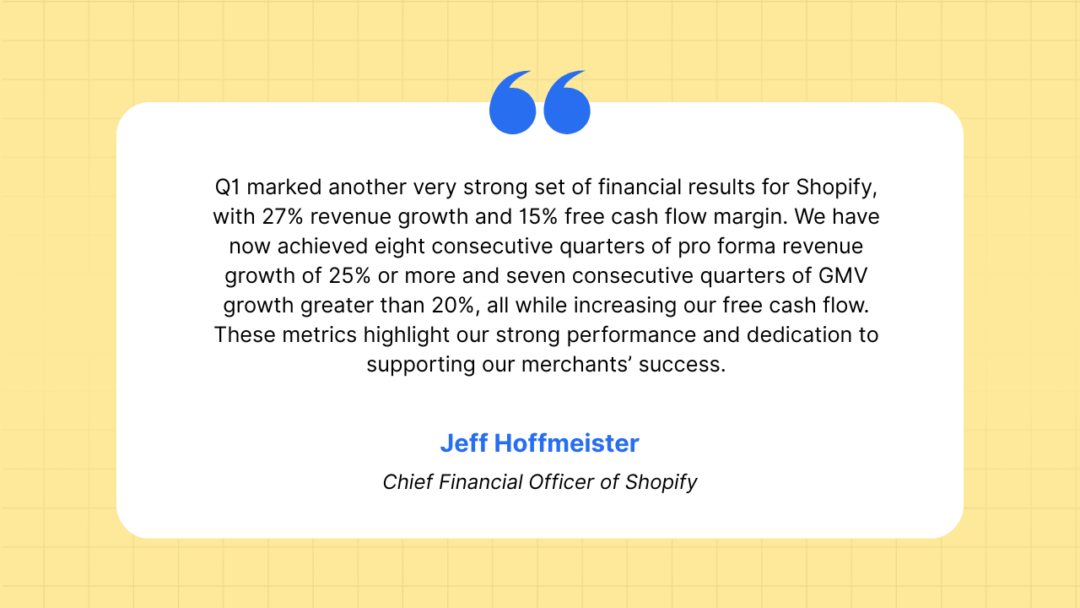
So, for the second quarter of 2025, merchants can expect:
- Revenue to grow at a mid-twenties percentage rate on a YoY basis
- Gross profit dollars to grow at a high-teens percentage rate on a YoY basis
- Operating expense as a percentage of revenue to be 39-40%
- Stock-based compensation to be $120 million
- Free cash flow margin to be in the mid-teens, similar to the first quarter of 2025
But growth isn’t just about plugging in new features, it’s about setting up the right backend systems to sustain and support your expansion.
That means:
✔️ Forming the right entity type in the US for global operations
✔️ Ensuring multi-state tax compliance in the US
✔️ Building a financial foundation for wholesale growth
✔️ Getting banking and payments infrastructure aligned with scale
With doola, you don’t have to build all of the above from scratch. We offer business formation, bookkeeping, tax support, and global-friendly banking, so you can grow confidently, anywhere in the world.
📘 Download our free e-commerce growth playbook for industry-specific insights.
Power Your Shopify Growth With doola
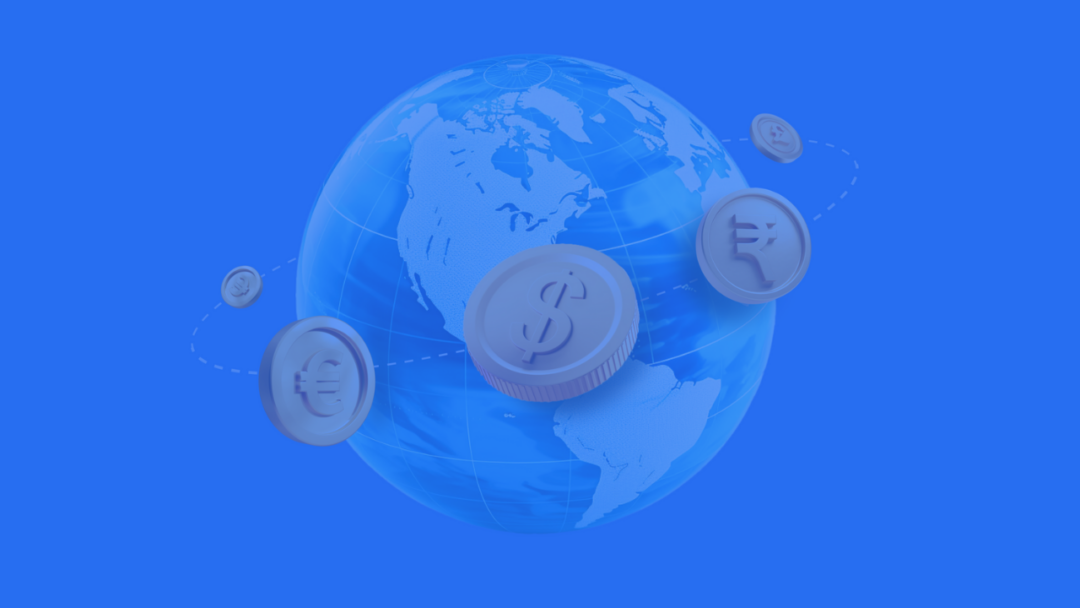
The Shopify ecosystem will continue to evolve, and the merchants who win are the ones who move now. They’re the ones who build scalable systems before the next wave hits.
But whether you’re planning your first international launch or eyeing B2B partnerships, don’t let backend friction slow you down. doola gives you the infrastructure you need to scale across borders, markets, and revenue models.
From US LLC formation to global banking, state-wise sales tax to wholesale compliance, we’ve got you covered.
Looking to expand globally or break into the B2B commerce landscape? Let’s make it happen!
Book your free demo with doola today and start scaling without borders.




